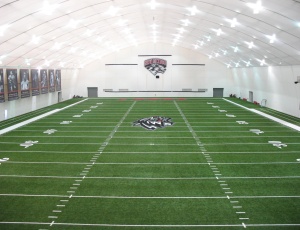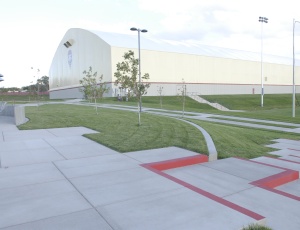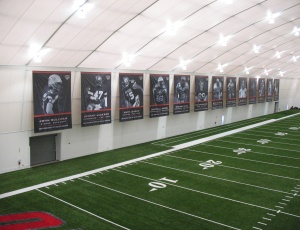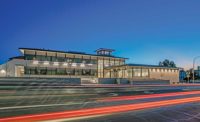In its final report on the collapse of the Dallas Cowboy�s practice facility that injured 12 people, the National Institute of Standards and Technology recommends owners of other fabric-covered, tubular-steel-framed structures have their buildings evaluated.



Chavez-Grieves Consulting Engineers, Albuquerque, which completed a report for the University of New Mexico, Albuquerque, about its indoor practice facility, found that wind pressure could enter the steel-and-fabric building through openings in the structure and not escape. This would overstress the training facility. In addition, several members and connections do not meet minimum strength requirements of the 2003 edition of the model International Building Code, published by the International Code Council.
Summit Structures of Allentown, Pa. designed the enclosed building. The independent engineer says louvers, roll-up doors and other openings created a partially enclosed building. Currently, the university only uses the facility when the louvers and doors are closed and the winds stay below 60 mph.
NIST concludes the Cowboy’s building designed and built by failed to withstand wind loads that were substantially less than required by design standards. The report indicates that Summit designed the Cowboy’s facility as fully enclosed, but the NIST team calculated internal wind pressure due to vents and multiple doors and found it consistent with a partially enclosed structure. NIST also did not rely on the fabric to provide lateral bracing, which was part of the original design documents. And the federal agency included the effects of localized bending, while Summit had not.
Computer models of the building allowed NIST to recreate various wind conditions, and it worked with the National Oceanic and Atmospheric Administration National Severe Storms Laboratory to estimate winds at the time of the Cowboys’ training facility collapse. They determined wind speeds ranged from 55 mph to 65 mph, well below the national standard of 90 mph. NIST is working to revise standards and building codes based on its findings.
The Chavez-Grieves report indicates 57% overstressing at the University of New Mexico facility. This is not as severe as the 500% overstressing NIST found in the Cowboys’ structure. Also the university’s design does not rely on the fabric roof to provide bracing, which the Dallas building did.
Scott Heatly, a partner with Chavez-Grieves, suggests the University of New Mexico could make simple modifications to the existing structure to help ensure it behaves as an enclosed building. This includes permanently closing doors and changing louvers so they do not allow air inside. The firm recommends the university consult with Summit, which is the engineer-of-record, on specific changes.
Summit President/CEO Nathan Stobbe says in a written statement: “Summit Structures has worked in the past and continues to work closely with University of New Mexico to ensure that they have a safe structure.” John Quinn Pate, vice president, architecture, with Molzen-Corbin & Associates, the local architect for the facility, said in a written statement released by the school: “Summit Structures has fully cooperated with the investigation and has agreed that these minor modifications are needed and have agreed to perform them as soon as practical.”
Summit has built multiple athletic facilities, including ones at Texas A&M University in College Station and the University of Texas at Austin. UT Austin has had its Summit building inspected soon after construction in June 2009. CI Engineering and S2 Specialty Structures, divisions of JCI Holding in Las Vegas, Nev., conducted a visual observation and verified the structure was constructed according to the approved drawings and calculations.
HaynesWhaley Associates of Houston completed a third-party evaluation of Texas A&M’s football practice and track and field facilities. Jason Cook, chief communications officer for the university, said the McFerrin Athletic Center had been inspected and found it could withstand 65 mph winds, not the campus standard of 90 mph winds. The university is reinforcing the structure. The smaller section now meets code, and the school is waiting the results of a wind tunnel test on the larger portion of the building. Texas A&M also has instituted a safety protocol and does not use the facility in severe weather conditions.



Post a comment to this article
Report Abusive Comment